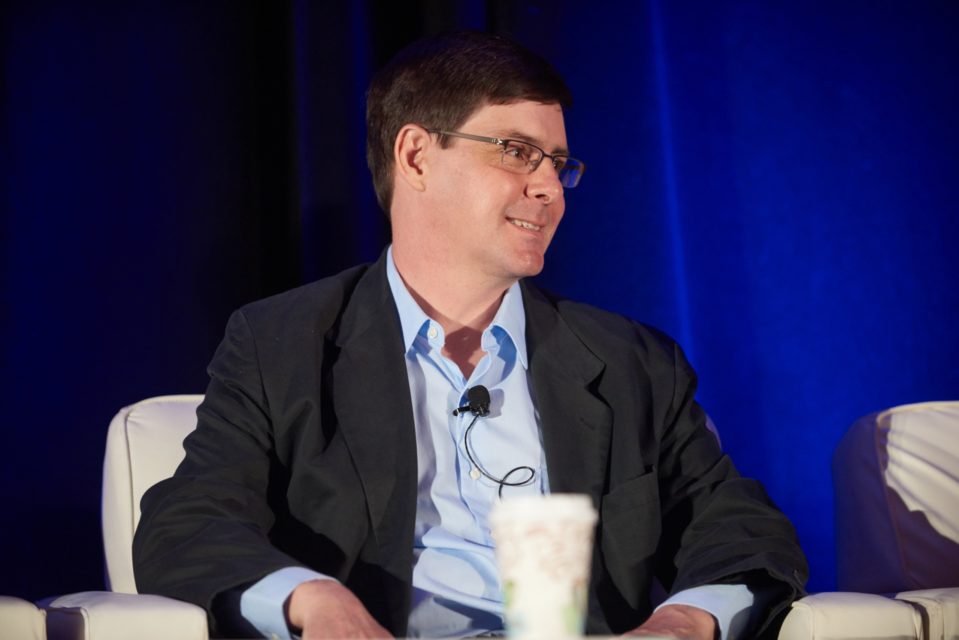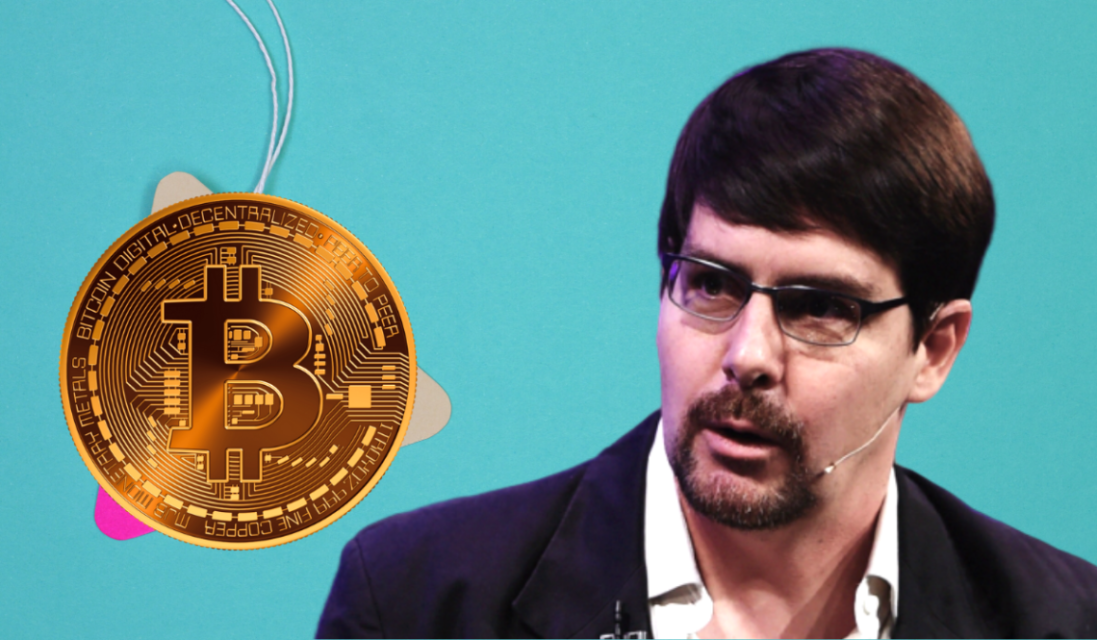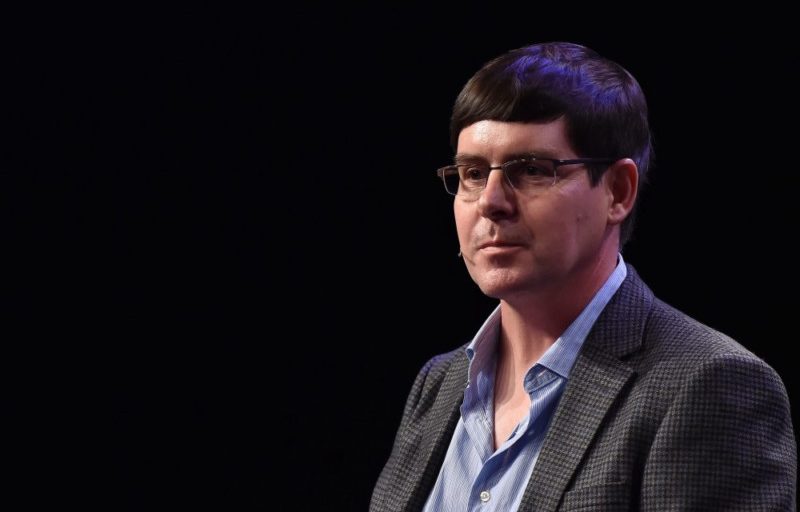Gavin Andresen is an American software developer best known for leading the development of Bitcoin after Satoshi Nakamoto disappeared.
Gavin Andresen Life
Gavin Andresen is an American software developer best known for his Bitcoin faucet, who took the title of Bitcoin’s lead developer after Satoshi Nakamoto left.
Andresen displayed a keen talent for computers and programming from a young age. Therefore, he spent most of his career working in computer science. He claims to be in the top 10 percent of all programmers today and is on the same level as Satoshi’s.
After Andresen finished high school, he went to Princeton University to study computer science. He graduated in 1988 and took a job developing 3D graphics software for Silicon Graphics, a Silicon Valley-based company. During this time he is one of the authors of a new file formatting system called VRML or Virtual Reality Modeling Language to represent 3D graphics online.
He left Silicon Graphics to work as the CTO of a VoIP startup and then co-founded a company that develops multiplayer games where blind people can play against sighted people.

Gavin Andresen and Bitcoin
Andresen discovered Bitcoin in May 2010, about eighteen months after Satoshi published the whitepaper. After chatting with Satoshi about Bitcoin and its potential, Andresen realized that what he needed most was a way for people to acquire cryptocurrencies without having to dig themselves. The solution he came up with was called the Bitcoin faucet.
The Bitcoin faucet worked like a regular faucet, but instead of dispensing water, it gave free Bitcoins. Understandably, the faucet was a huge success. In fact, many have said that this is one of the most important contributors to Bitcoin’s early success.
Before long, Satoshi trusted Andresen enough to code and process Bitcoin. “Over time he (Satoshi) trusted my judgment about the code I wrote,” he said.
Gavin Andresen was also responsible for commissioning other developers to help nurture and grow Bitcoin and expand its user base. As 2010 drew to a close, Satoshi was placing more and more responsibilities on Andresen’s shoulders.
Andressen noted the following in his statement on the subject:
“Finally, he sent me a quick email asking me if it would be okay to put my email address on the Bitcoin homepage, and I said yes, once he put my email address there, take it. I was the person everyone would email when they wanted to know about Bitcoin.”
Andresen officially took the reins in December 2010 and posted an informational message on the Bitcoin forums to the developers. Explaining how developers can suggest changes going forward and submit code, he also wrote:
“With Satoshi’s approval, and with great reluctance, I will begin more active project management for Bitcoin.”
Over the next four months, Satoshi moved further and further away from Bitcoin, eventually deciding to leave Bitcoin forever on April 26, 2011. He told Mike Hearn, another early Bitcoin developer:
“I moved on to other things. He’s in good hands with Gavin and everyone else.”
A few days later, Andresen sent Satoshi an email, telling him that he had accepted an invitation to speak to the CIA about Bitcoin, which he hoped would help clean up Bitcoin’s shady image. Satoshi never replied to this message and was never heard from again. We can assume that Andresen does not share his optimism about how US intelligence agencies will treat Bitcoin.
Despite his reluctance to take on the job, Andresen still believed he was the most suitable developer for the job. “I sure was the best,” he said when asked about the subject. He was also well paid for his efforts: In 2014, Andresen said he was paid $209,648 a year he received in Bitcoin. He traded most of his bitcoin for dollars because “it doesn’t make sense to collect all the eggs in one basket”, but he had enough money to retire comfortably at the end of the decade.
A few years after Andresen took over Bitcoin, he founded the Bitcoin Foundation. These scandals include arms and drug dealers accepting Bitcoin in exchange for their illegal products on the Silk Road; and hackers minting 184 billion new BTC within seconds, massively devaluing all other Bitcoins in circulation.
Bitcoin’s reputation was in shambles in 2012 as Silk Road finally shut down and the Bitcoin hack was reversed. As such, Andresen urgently needed to get the Bitcoin Association off the ground while managing the ongoing development of Bitcoin.
What did Andresen actually do in his role as Bitcoin lead developer? It seems that he mostly arbitrated among Bitcoin developers who couldn’t agree on which direction the project should go.
Increase Block Size
A group led by Andresen and Mike Hearn believed that blocks should grow in line with Satoshi’s vision. This would turn Bitcoin into a low-cost, fast payment network like PayPal. However, it could have led to a situation where ordinary computers could not process Bitcoin’s blocks because the blockchain itself had become too large to manage, and eventually the entire network could fall into the hands of the only people who could afford systems large enough to run it.
Andresen suggested increasing the block size from 1 MB to 8 MB and increasing it by 40 percent every two years until 2036. Mike Hearn agreed that the block size should be increased in line with Satoshi’s plans. Some other core developers also wanted Bitcoin blocks to grow in smaller chunks: between 17 percent and 100 percent.
Tier-2 Solutions
Opponents pointed out that increasing the block size would throw the box down the road for anyone else to deal with: developers would have to keep increasing the block size to account for increased traffic over time. What they proposed instead were separate off-chain networks that would process smaller transactions away from the Bitcoin blockchain itself, known as “layer-2” solutions. This kind of layer-2 network (developed years after this discussion started)
The warring factions were openly hostile to each other, each accusing the other side of deliberately – or completely foolishly – sabotaging Bitcoin. And as Bitcoin’s chief, Gavin Andresen was left in the middle.
When Andresen took over Bitcoin, he probably hoped to spend most of his time writing and editing code. But he actually spent most of his time mediating between these two warring factions within the Bitcoin community. As a lead developer, he got into the awkward situation of having to make the final decision on all major decisions when there was no consensus. He says this makes him a kind of “benevolent dictator” where what other people think isn’t nearly as important as his own. Understandably, this has only escalated Bitcoin’s civil war.
After leaving Bitcoin, Andresen was still determined to see Bitcoin implement larger blocks. He and fellow developer Mike Hearn decided that the only fair way forward was to get people to vote on what they wanted: bigger blocks or a tier 2 solution.
They have put together a new version of Bitcoin called Bitcoin XT: an almost identical copy of Bitcoin, but with a block size of 8 MB, which will grow every two years, not 1 MB in block size. They suggested to the community that people decide which version of Bitcoin they want to use: Bitcoin core with small blocks and layer-2 implementations; or Bitcoin XT with large blocks.
Most of the other developers were against not only Andresen and Hearn’s proposal, but also the idea of voting for everyone but themselves on the direction of Bitcoin. They argued that they had to decide on their own what would happen to Bitcoin’s code and that trying to put it to a vote was a blow.
Andresen and Hearn went ahead anyway, but their plans were turned upside down by a malicious hacker. The hacker installed software that overloaded users’ computers with traffic when they tried to use Bitcoin XT.
This caused a Long Island-based ISP’s services to shut down across Long Island for several hours, forcing cryptocurrency exchange Coinbase to shut down for almost a day. Thanks to the combined efforts of hackers and small-block supporters, Bitcoin XT never went up.
In fact, it’s fair to say that he crashed and burned and took Gavin Andresen with him.
Evidence That Gavin Andresen Could Be Satoshi Nakamoto
1. Career, Qualifications and Technical Talent
Andresen’s computer science degree from Princeton and his four years as a Bitcoin lead developer proves that he has the skills needed to invent Bitcoin.
2. His beliefs align with Satoshi’s
Andresen describes himself as a libertarian who is deeply concerned with central government and central banks acting as the sole point of failure for the global monetary system. He even keeps a trillion-dollar Zimbabwean bill in his wallet to remind himself of the dangers of centralized control.
Satoshi shared Andresen’s libertarian beliefs and concerns about central banks. He added the text “The Times 03/January/2009 Chancellor on the verge of second bailout for banks” to Bitcoin’s genesis block.

Evidence That Gavin Andresen Is Probably Not Satoshi Nakamoto
1. He Says He’s Not
When journalists asked him if he invented Bitcoin, Andresen denied it and said he still supports Craig Wright.
2. Requires an Extraordinarily Detailed Fake Trace
There are volumes of forums and email messages between Satoshi and Andresen. If these are fake, Satoshi must have spent more time writing fake emails than writing code for Bitcoin to convince the world that he isn’t Gavin Andresen.
3. Supported Someone Else To Become Satoshi
From 2016, Andresen publicly supported Craig Wright as the inventor of Bitcoin. If it was Satoshi, why would he do that? To lead people astray? Probably, but that seems a bit far-fetched.







